Car-sharing with an eagle and a rabbit
Did you ever travel in a small car together with an eagle and a rabbit? I did so recently in eastern Kyrgyzstan. I was looking forward to witnessing eagle hunting in Kyrgyzstan, but did not expect that the eagle and her future prey would travel together to the hunting theater.
Installed on the passenger’s front seat, I had the rabbit roaming frantically around my feet, with the eagle watching the scene from the vehicle open boot. Quite a unique and stressful experience knowing that the sacrificial rabbit will die soon in the implacable talons of the raptor.
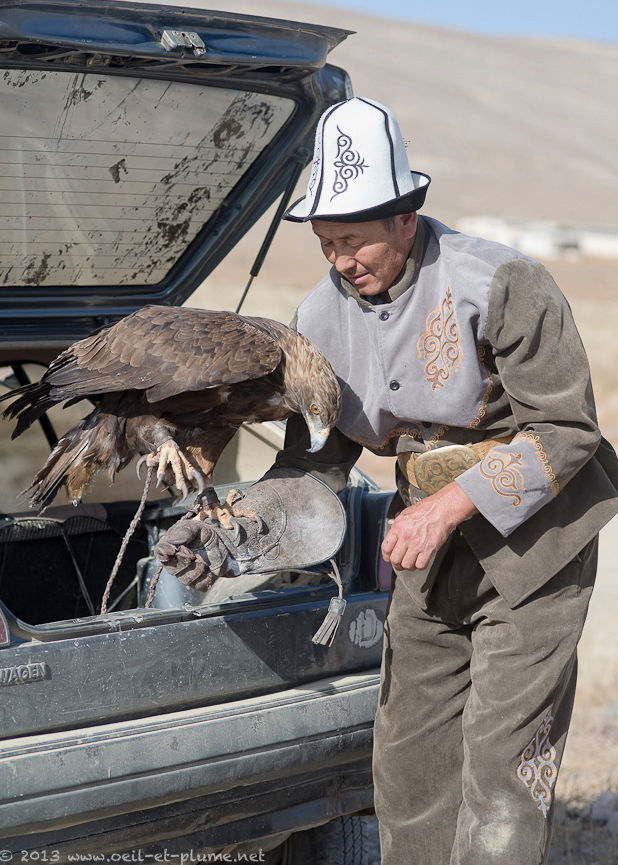
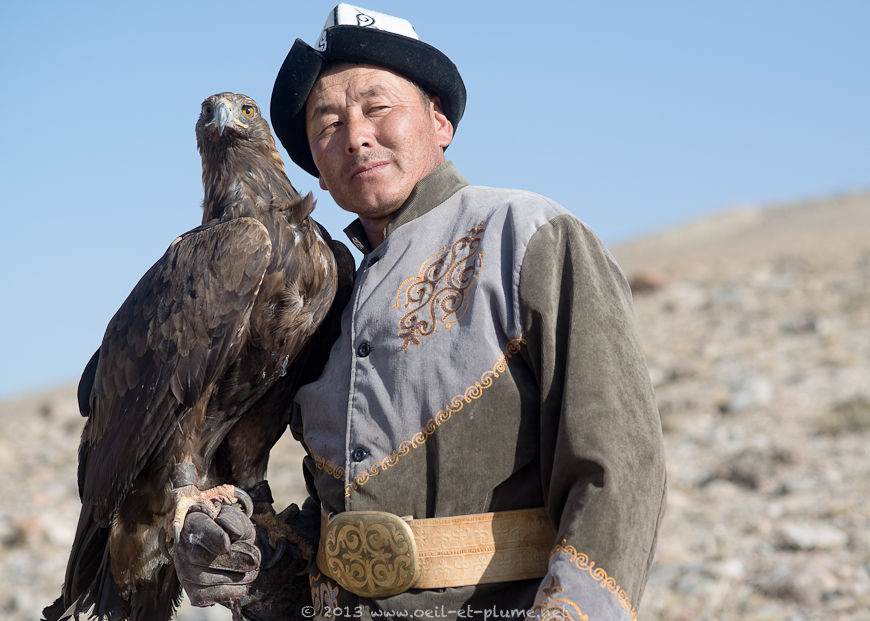
Eagle hunting with Tumara and Tulgar
10-year old, Tumara is a female royal eagle living since her young age with Talgar. The Kyrgyz hunter caught and trained her in three months before starting hunting with the eagle in the arid steppes nearIssyk-KölLake.
Eagle hunting is a central element of traditional nomadic culture in Kyrgyzstan. Kyrgyz people manage to preserve their nomadic culture across the centuries, even under Mongol rule. Accommodation in yurt and horse riding represent key tenets of their nomadic lifestyle.
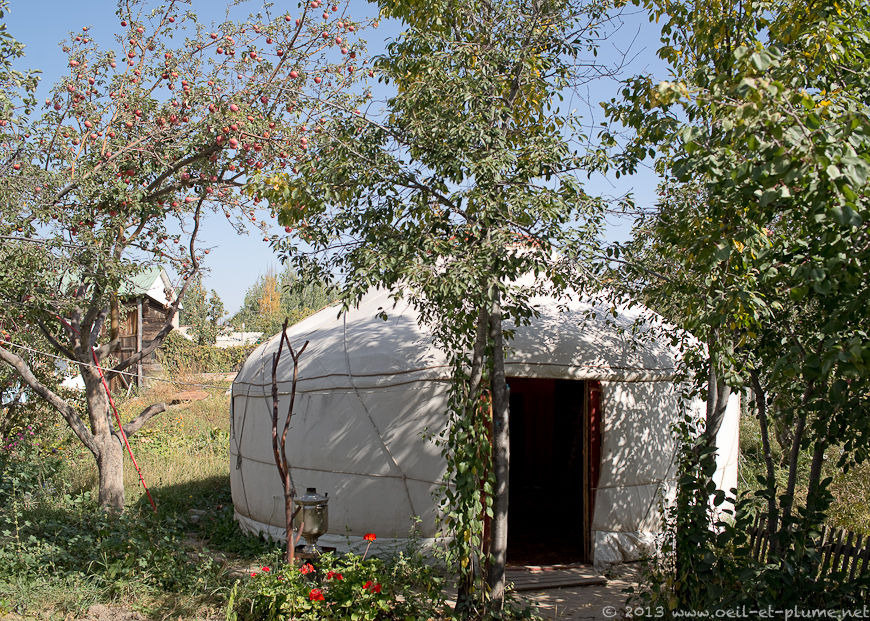
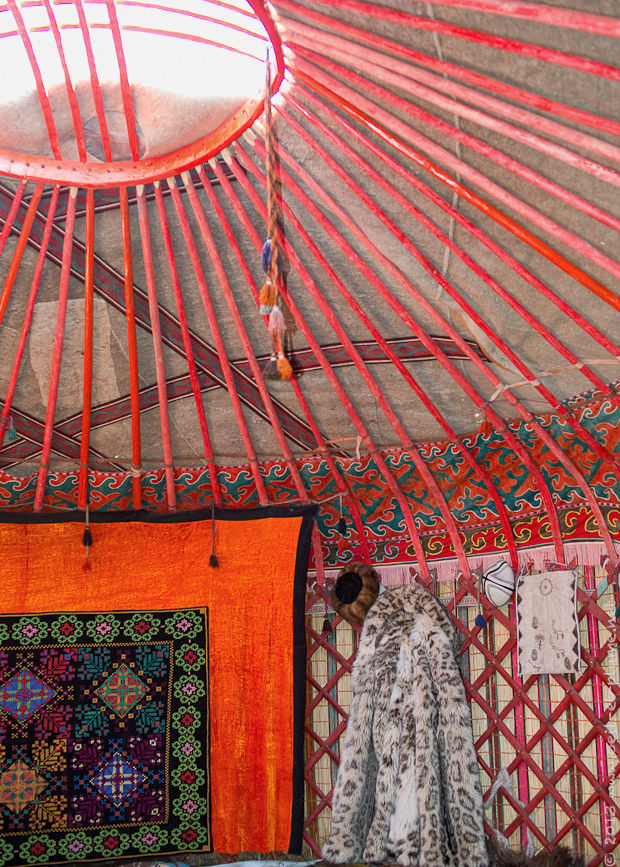
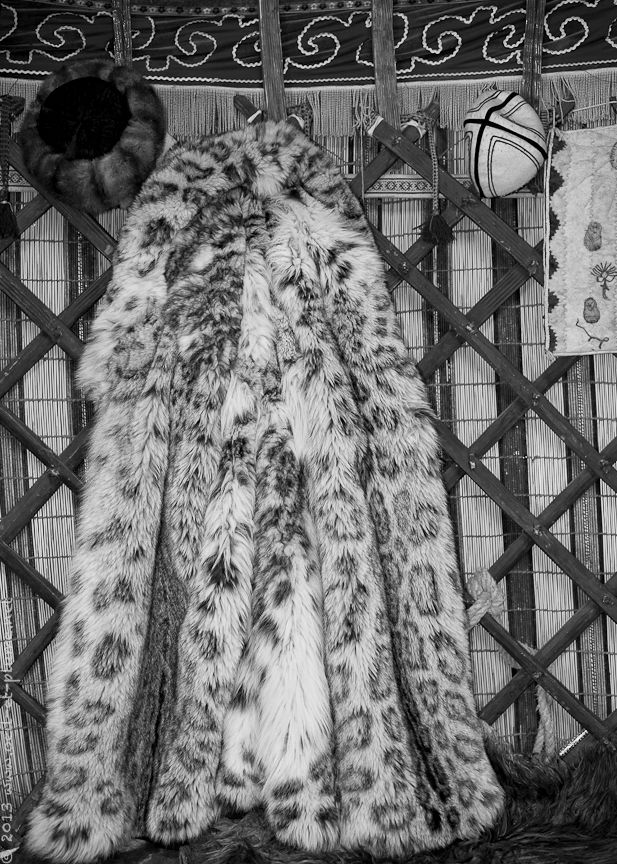
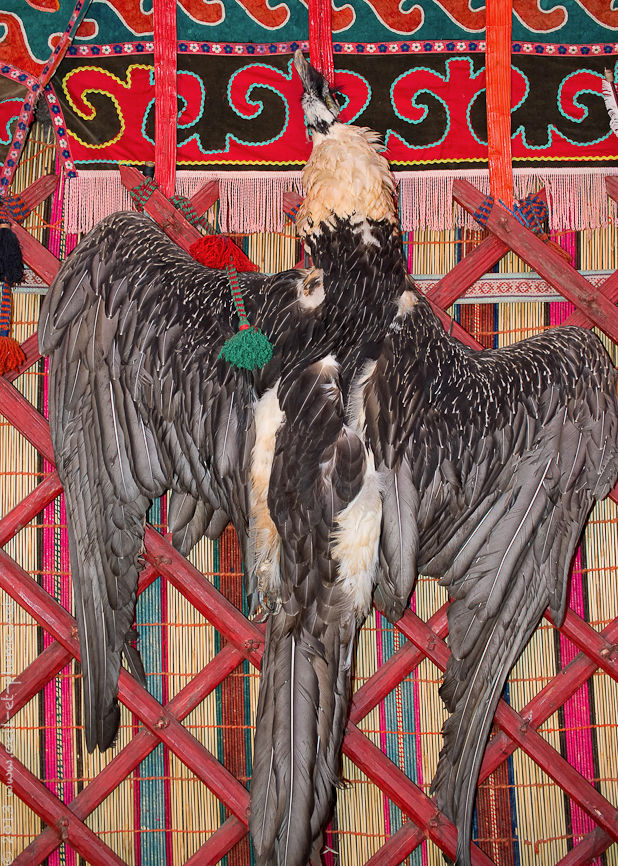
So does hunting, often assisted by a bird of prey – be it a hawk, a falcon or an eagle. Amongst those raptors, the royal eagle constitutes indeed the noblest hunting companion in Central Asia.
Falconry, regardless of the raptor assisting the man, was reportedly known in Central Asia since more than 2.000 years. Called berkutchi in Kyrgyzstan, eagle hunting is a lifetime profession and hereditary. Kyrgyzstan counts only 50 professional eagle hunters, all males. Eagle hunting is a very male thing in Central Asia.
Talgar embraced the hunting path as early as eight. However, his grandfather, renowned eagle hunter, just passed away while Talgar’s father did not pursue the family tradition. Talgar visits and observes seasoned eagle hunters to acquire the fundamentals of their art. He starts hunting with hawks and falcons, before meeting and catching the then-young Tumara.
Traditional eagle hunting is carried out on horse and in winter because the eagle’s preys are more visible on the snow than during the rest of the year. In summer and autumn and spring, Talgar trains and feeds Tumara with sacrificial rabbits. Visitors can attend the sessions, but in very small numbers at a time and against substantial financial fee.
Don’t think for a second that Tamara’s wild preys consist in field mice and rabbits. Weighing only six kilos and but relying on her 1.5m wingspan, she hunts mostly foxes and wolves. She attends national and international competitions periodically and was nominated twiceKyrgyzstan’s fox hunting champion. In fact, Tumara sustains Talgar’s family throughout the year.
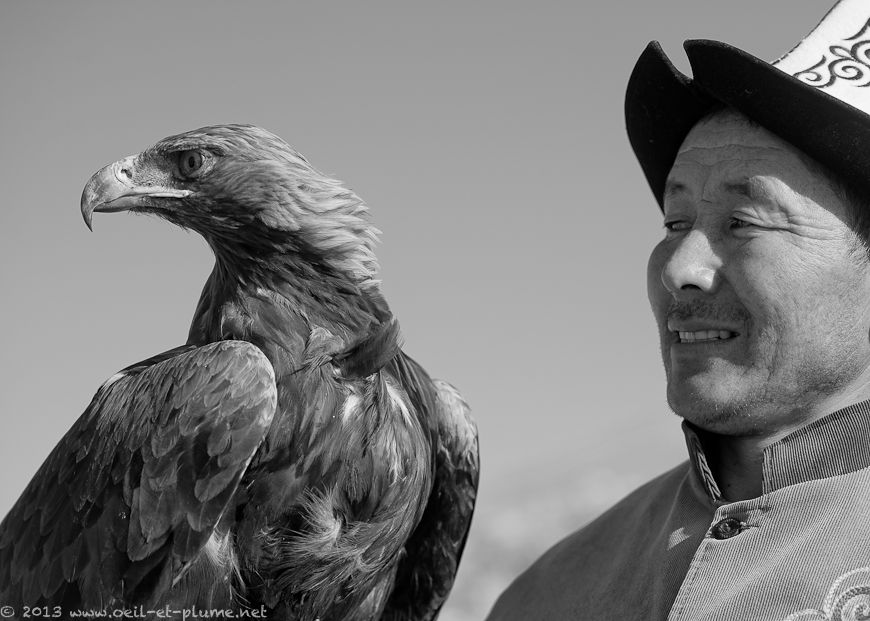
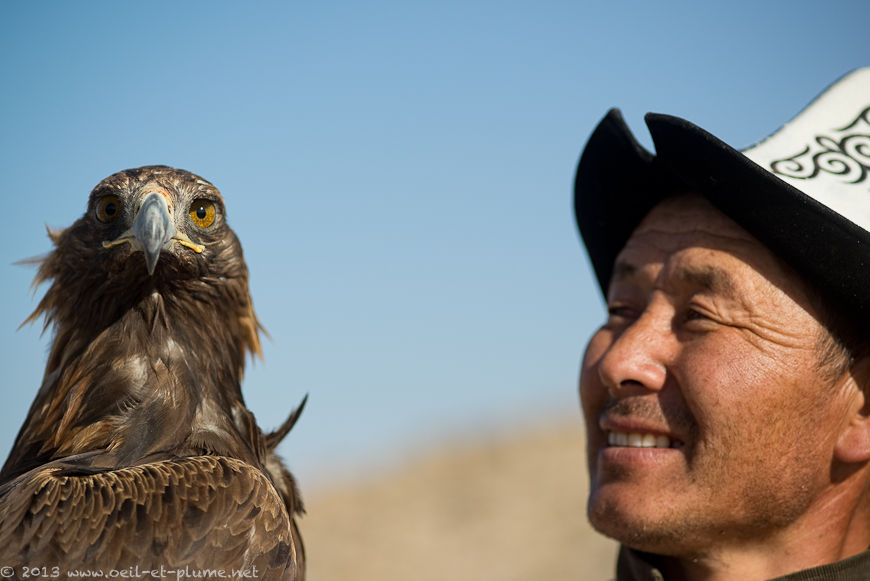
The bonds forged over time between the eagle and the berkutchy exceeds financial considerations to become profoundly emotional and intimate. ‘Tamara is my daughter’, declares proudly Talgar.
The relationship is also very demanding and time-consuming to build and sustain. While training a young eagle, the berkutchy works patiently on forging the backbone of their hunting joint venture.
The growing raptor is hooded for weeks to develop its dependence on, and trust to the man. Hand feeding is one important vector of trust. Physical contacts between partners become common. When blinded, the bird learns to recognise his hunting partner through his blood pulse measured by his talons across the thick leather glove.
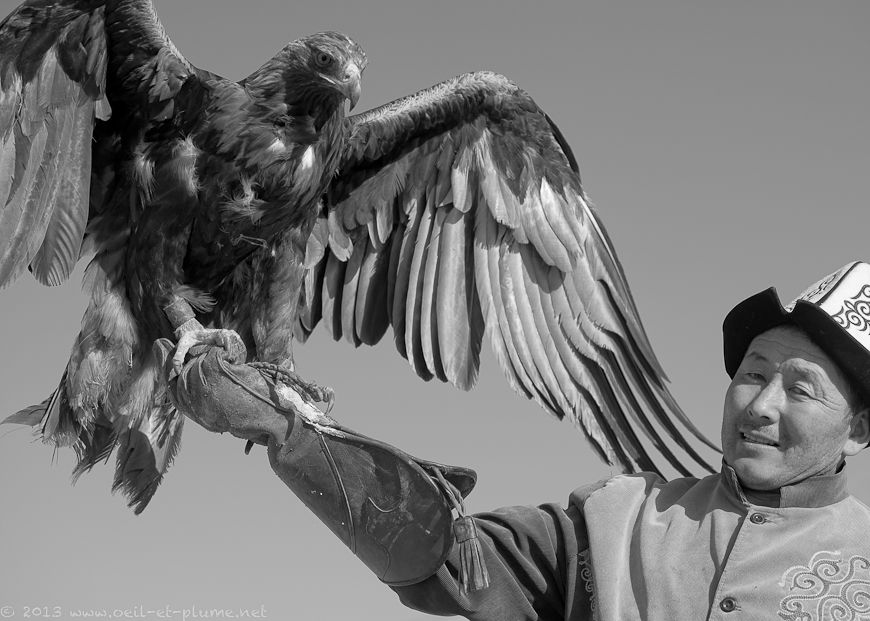
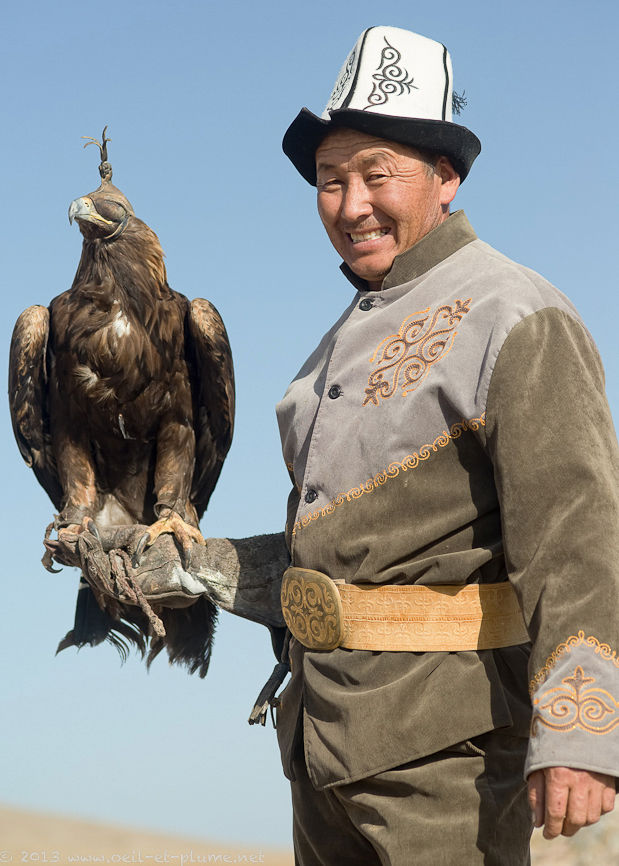

But time has come for the hunt. Tamara is already hooded to better focus on Talgar voice and directives. The rabbit is brought out of the car and left in a flat and bare piece of land. Not many places to hide from the raptor. Meanwhile, the hunting couple ascend the crest of a hill nearby.
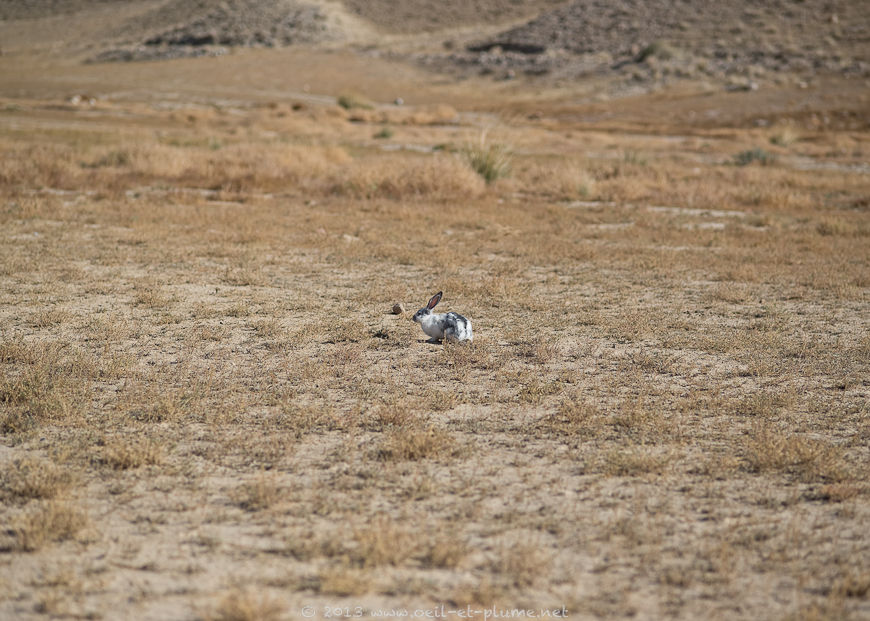
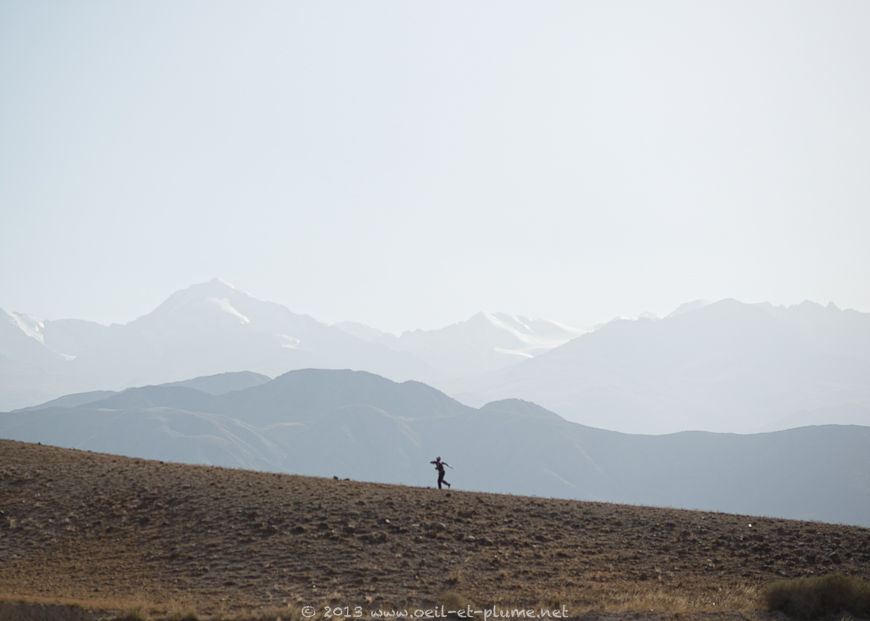
Follows a moment of intense emotion. On one hand, the beautiful complicity of Tumara and Talgar, visible even from a distance. On the other hand, the vulnerable rabbit. Talgar solves the emotional tension and the moral dilemma by unleashing the raptor.
Tumara’s flight is beautifully curved and low. The sacrificial rabbit attempts hiding in a bush, soon joined by the bird. The hunt ends in an acid agony cry resounding in my ear and my soul until today.
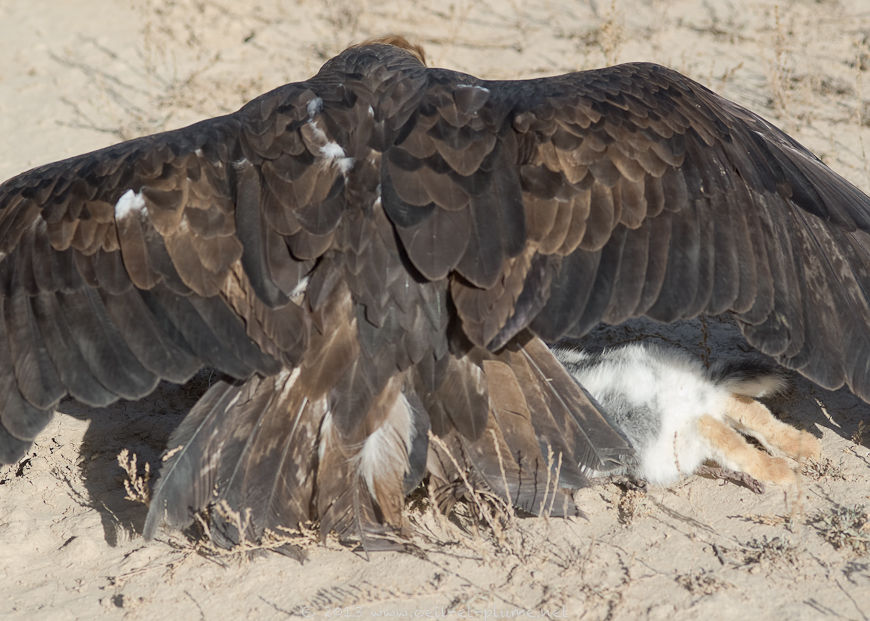

The raptor is quick to start her meal. She swallows ravenously not only flesh, but also big bones. Talgar interrupts the feast. His second eagle, still on training, will eat the rest.
While watching the scene, I activate my logical sense for my good conscience and self-protection. Tumara must eat daily, and eats only fresh meat. Human beings slaughter animals for food or, even worse, for fun. My scapegoat strategy is so successful that I start immediately learning eagle hunting.
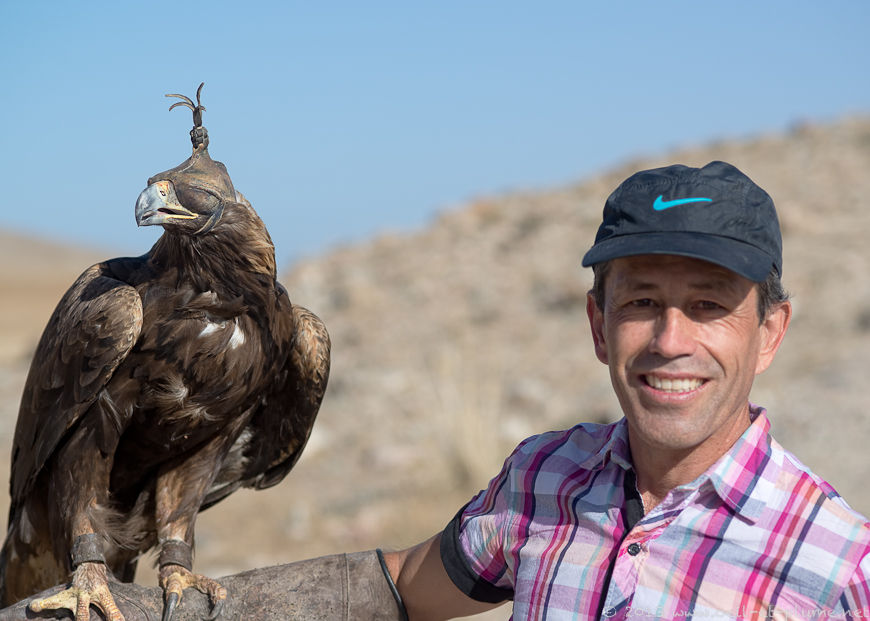
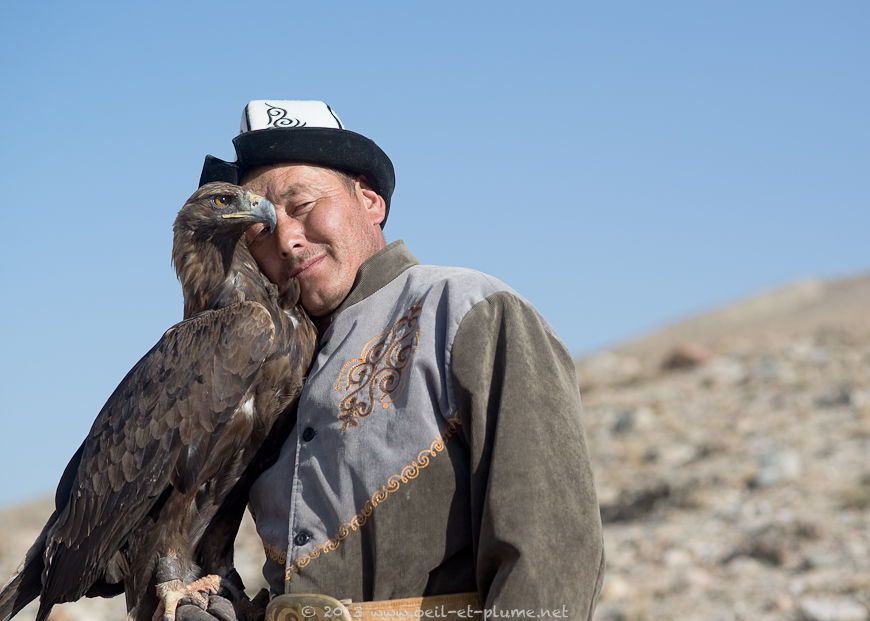
No, just kidding. Tumara’s real human partner is named Talgar, and he loves her like his daughter.
It is time for me to leave eastern Kyrgyzstan. See you soon in Bishkek and in Osh, before crossing into Uzbekistan.
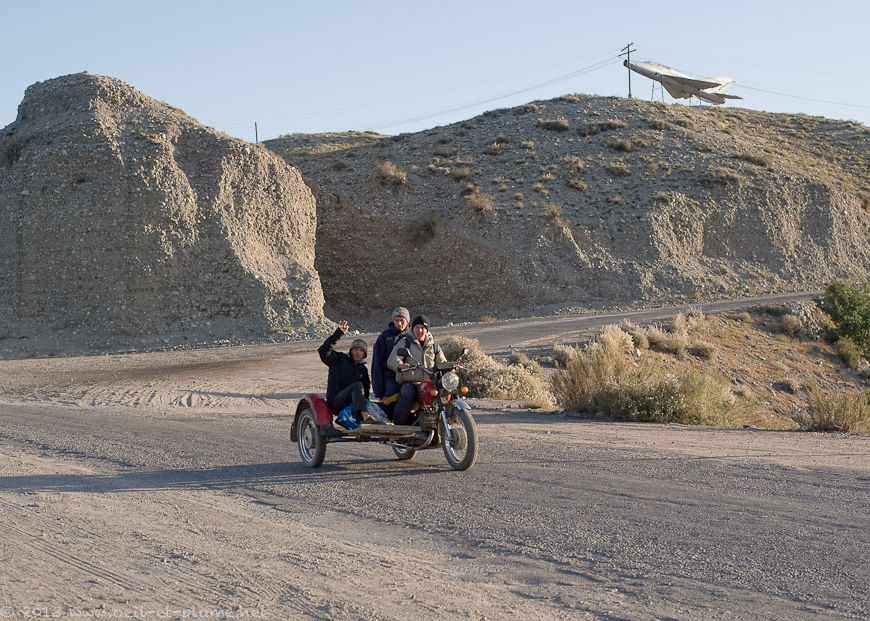
Cheers,